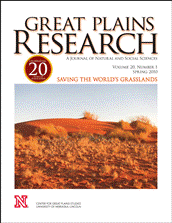Center for Great Plains Studies

Great Plains Research: A Journal of Natural and Social Sciences (through 2013)
Date of this Version
2003
Document Type
Article
Abstract
Most North Americans are meat eaters but few care to ask where their meat comes from or how it is produced. Kill and Chill answers those questions from a Canadian perspective by chronicling the development of Canada's beef industry during the twentieth century.
Canadian beef processing shares many similarities with its US counterpart. At the beginning of the 1900s cattle were raised on the Plains and Prairies and shipped eastwards in railcars to be sold in stockyards, then slaughtered in multi-species packinghouses. Chicago became the prototypical meatpacking town with its sprawling stockyards and packinghouse district, a pattern later emulated in Toronto. Packinghouse working conditions described in Upton Sinclair's 1906 The Jungle led US and Canadian authorities to introduce federal meat inspection, while US unions fought to improve workers' pay and conditions on both sides of the border. By the 1970s, meatpacking wages exceeded national averages for manufacturing employees in both countries. Since then cost-cutting innovations-pioneered, in many cases, by US beef processors-have led to a restructuring. Old urban plants have closed, large-slaughter-capacity, single-species plants have opened in small towns on the Plains and Prairies, and industry wages have fallen.


Comments
Published in Great Plains Research Vol. 13, No. 2, 2003. Copyright © 2003 The Center for Great Plains Studies, University of Nebraska–Lincoln. Used by permission.